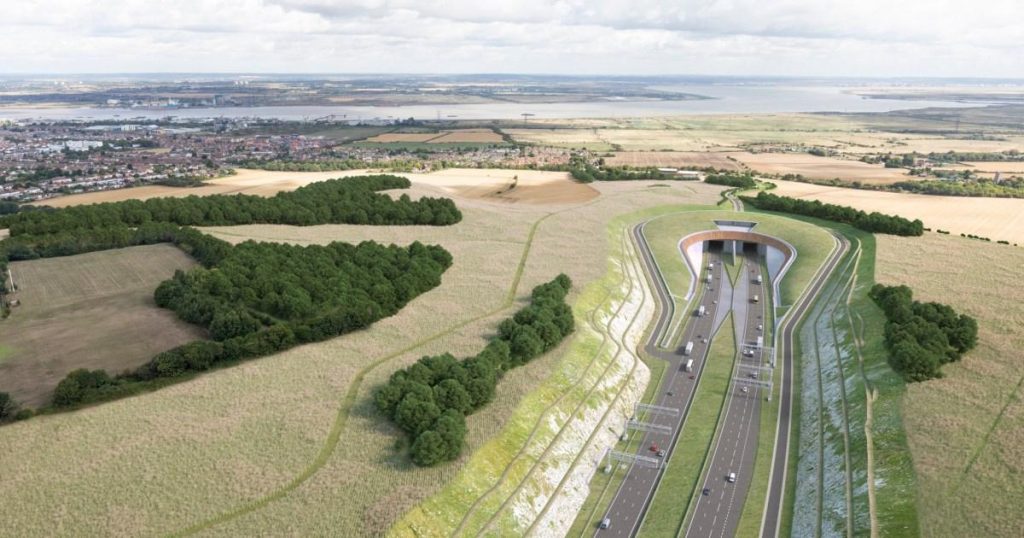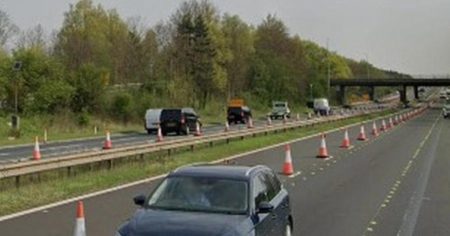The Dartford Crossing, a vital bridge spanning the River Thames and connecting the M25 to Essex and Kent, has become notorious as the UK’s largest traffic bottleneck. Averaging 150,000 vehicles daily, the crossing significantly exceeds its intended capacity by 20,000 vehicles, leading to frequent congestion and delays. This critical infrastructure issue has spurred urgent calls for a second Thames crossing to alleviate the strain on the existing infrastructure and improve traffic flow in the region. The proposed solution, the Lower Thames Crossing, aims to divert traffic away from Dartford and provide an alternative route for the overwhelming number of vehicles traversing this crucial artery.
The Lower Thames Crossing project, conceived in 2009, has faced repeated delays, most recently in October 2024 when the government postponed its planning decision until May 2025. While proponents like Dartford’s MP, Jim Dickson, emphasize the project’s necessity to alleviate traffic misery and boost the UK economy, critics have voiced concerns about its environmental impact and substantial cost, urging the project’s abandonment. The debate highlights the complex balancing act between addressing critical infrastructure needs and mitigating potential negative consequences, including environmental damage and escalating expenses.
The current situation at Dartford underscores the urgency of finding a solution. The crossing, handling over 50 million vehicles annually, including a significant portion of goods vehicles and port freight, is prone to severe traffic disruptions. Accidents, such as lorry fires and oil spills, can bring the area to a standstill, impacting both commuters and the movement of essential goods. Recent incidents, including mistaken charges for drivers who never used the crossing, have further highlighted the existing system’s flaws and fueled public frustration.
Proponents of the Lower Thames Crossing argue that it offers a crucial remedy for the chronic congestion plaguing Dartford. With only one river crossing east of London, compared to 16 west of the Blackwall Tunnel, the region faces a significant imbalance in traffic distribution. The Lower Thames Crossing, they argue, would address this disparity, facilitating smoother traffic flow and unlocking economic potential. Locals, like Dennis Mehmed, a business owner who regularly commutes near Dartford, attest to the urgent need for an alternative route, citing the substantial time savings and improved accessibility it would provide.
Opponents, like the Transport Action Network, advocate for scrapping the project altogether. They question its long-term effectiveness, predicting that even if completed, the Lower Thames Crossing would provide only temporary relief from congestion at Dartford. They also raise concerns about the project’s environmental footprint, arguing that a £10 billion investment that exacerbates carbon emissions contradicts the government’s commitment to tackling climate change. This clash of perspectives underscores the complex considerations surrounding large-scale infrastructure projects, pitting the need for improved transportation against environmental and financial constraints.
The Lower Thames Crossing proposal remains a contentious issue, with strong arguments on both sides. The sheer scale of the project, reflected in its extensive planning application – reportedly Britain’s longest – adds another layer of complexity. As the government’s decision deadline looms, the debate continues, with proponents emphasizing the project’s economic and logistical benefits, while opponents raise concerns about its environmental impact and long-term effectiveness. The ultimate decision will have significant ramifications for the region’s transportation infrastructure and its future development.











